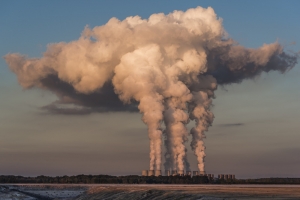From the rise of bamboo toilet paper to the popular turn towards electric cars, eco-friendly living is more common than ever before. With the current spotlight on sustainability, understanding your carbon footprint is key to making informed choices. If you're not sure what a carbon footprint is,
This guide explores your carbon footprint and the primary contributors to individual environmental impacts so you can make helpful and effective changes in your lifestyle today.
What Are Carbon Footprints?
A carbon footprint can be compared to the trail of carbon emissions left behind by your activities, like powering your homes, driving your cars, or even enjoying a tasty meal. It's a measure of the amount of carbon dioxide and other greenhouse gases generated by these activities. The higher your carbon footprint, the greater your impact on the environment and climate change.
Understanding and reducing individual and corporate carbon footprints plays an important role in mitigating climate change. By becoming conscious of daily choices, society can collectively work towards a more sustainable future.
What Factors Contribute to Carbon Footprints?
Understanding the factors that contribute to your carbon footprint is essential in your journey toward a more sustainable future. From transportation and energy usage to food choices, each aspect of daily life plays a role in shaping your environmental impact.
Transportation
Whether it's driving to work, taking a flight for a vacation, or even shipping goods across the globe, the emissions from transportation activities add up quickly. By opting for eco-friendly modes of transport like biking, walking, or carpooling, you can make a tangible difference in reducing your carbon footprint.
Energy Usage
The way you power your home, office, and everyday devices also heavily influences your carbon footprint. Reliance on fossil fuels for electricity and heating contributes significantly to greenhouse gas emissions. Embracing energy-efficient practices, investing in renewable energy sources, and being mindful of energy consumption can help reduce your carbon emissions.
Food Choices
The production, transportation, and disposal of food all effect greenhouse gas emissions. Reaching for locally sourced, organic foods and reducing meat consumption are ways to lower your food-related carbon footprint. Additionally, making sustainable choices such as supporting restaurants that prioritize eco-friendly practices can make a positive impact.
Switch to Sustainable Products
Making conscious choices about the products you use daily can significantly reduce your carbon footprint. Choosing products made from renewable resources also helps reduce the overall environmental impact of your consumption habits.
Reduce Energy Consumption
Simple changes in your energy consumption habits can go a long way in lowering your carbon footprints. Turn off lights when not in use, unplug electronics, adjust thermostat settings, and invest in energy-efficient appliances. By being mindful of your energy usage, you can contribute towards a greener and more sustainable world.
The Impact of Eco-Friendly Choices
When it comes to reducing your carbon footprint, every choice counts. From using reusable shopping bags to adopting energy-efficient appliances, these small changes collectively contribute towards a greener and more sustainable planet. Embracing eco-friendly practices is about fostering a mindset of environmental stewardship for future generations.
Shaping a Greener Tomorrow
Understanding and reducing your carbon footprints are crucial steps towards mitigating climate change and creating a more sustainable world. By making conscious choices in your daily life, such as opting for eco-friendly and reducing energy consumption, everyone can play a part in lowering your environmental impact.
The collective efforts of individuals, businesses, and policymakers will be instrumental in driving meaningful change and accelerating carbon footprint reduction. By embracing innovative technologies, sustainable practices, and a shared commitment to environmental stewardship, the community can pave the way for a more sustainable future for generations to come.






